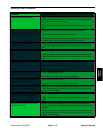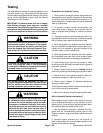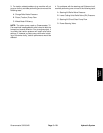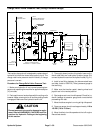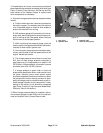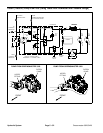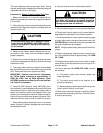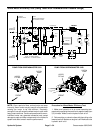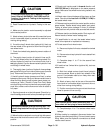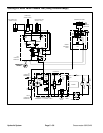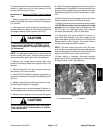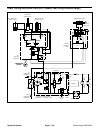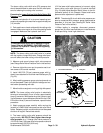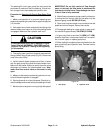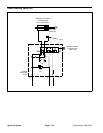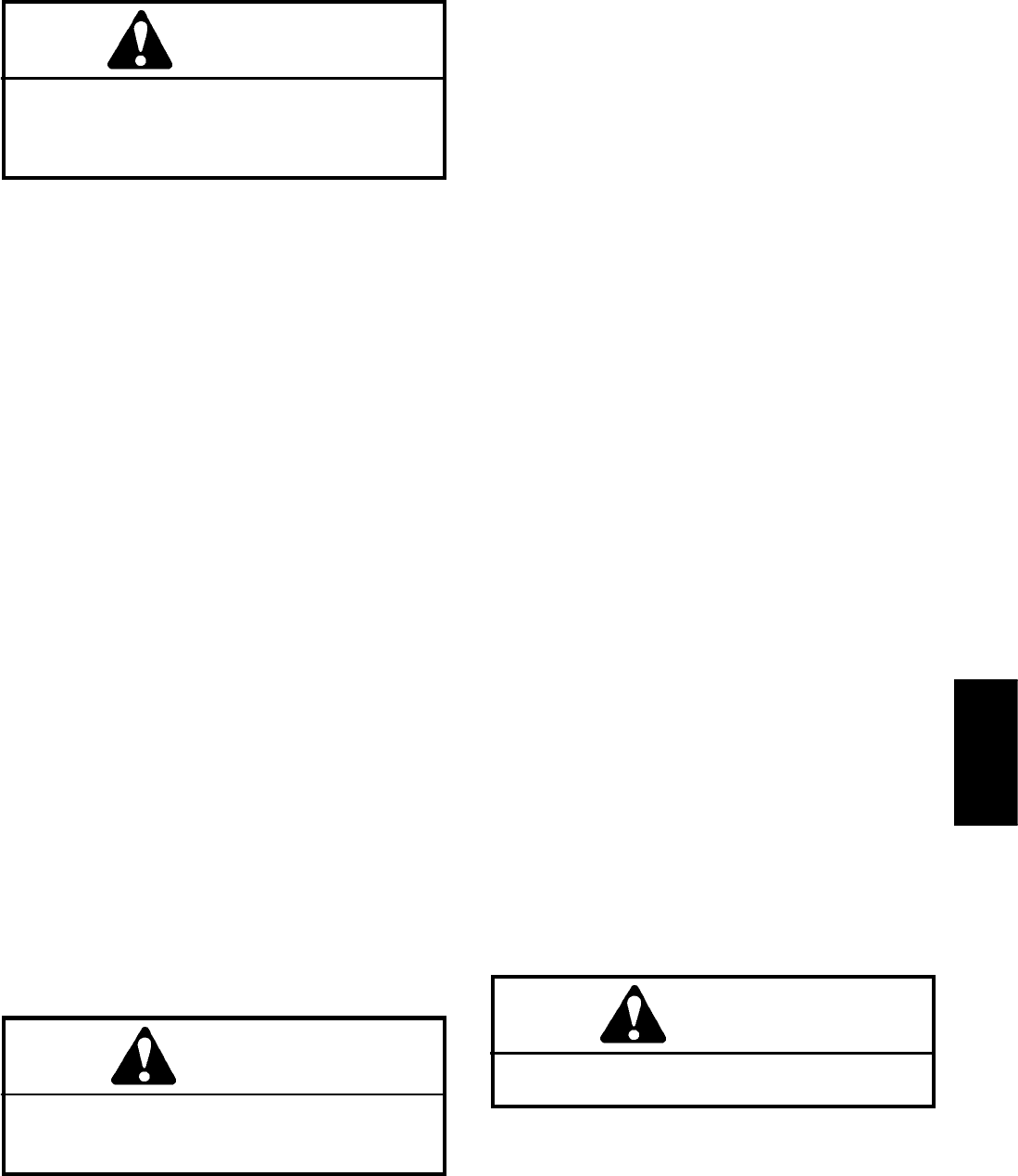
Greensmaster 3320/3420 Hydraulic SystemPage 5 -- 35
CAUTION
Prevent personal injury and/or damage to equip-
ment. Read all WARNINGS, CAUTIONS and Pre-
cautions for Hydraulic Testing at the beginning
of this section.
3. Read Precautions for Hydraulic Testing in this sec-
tion.
4. Make sure the traction control assembly is adjusted
to the neutral position.
5. Attacha heavychaint o therear ofthe machineframe
and an immovable object to prevent the machine from
moving during testing.
6. If machine has 3 wheel drive (optional kit), block up
the rear wheel off the ground to allow flow through the
rear wheel motor.
7. Chock front wheel being tested to prevent rotation of
the wheel.
8. Thoroughly clean junction of hydraulic lines and fit-
ting on front wheel motor that is not being tested. Dis-
connect hydraulic lines from front wheel motor that is
not being tested. Cap the disconnected hydraulic lines
and fittings in wheel motor.
9. Thoroughly clean junction of hydraulic hose and up-
perhydraulic fittingonfront sid eofpistonpump(forward
port). Disconnect hose from upper pump fitting.
10.Install hydraulic tester (pressure and flow) in series
between piston pump fitting and disconnected hose to
allow flow from piston pump to tester (same tester con-
nections as Piston (Traction) Pump Flow Test). Make
sure that fittingand hose connections are properly tight-
ened. Also, make sure the flow control valve on tester is
fully open.
11.Start engine and run at low idle speed. Check for hy-
draulic leakage and correct before proceeding with test.
CAUTION
Use extreme caution when performing t est. The
wheel being tested will be trying to move the ma-
chine.
12.Move throttleso engine isrunning athigh idle speed.
Make surethat functional control leveris in thet ransport
position.
13.Slowly push traction pedal in forward direction until
1000 PSI (69 bar) is displayed on the tester pressure
gauge. Make sure that wheel motor being tested is not
rotating.
14.Wheel motor internal leakage will be shown on flow
meter. Flow should be less than 1.5 GPM (5.7 LPM) for
the tested wheel motor.
15.Release traction pedal to theneutral position and re-
lease brakes. Rotate wheel being tested and retest.
Testing of wheel motor leakage in three (3) different
wheel positions will provide most accurate test results.
16.Release traction and brake pedals. Shut engine off.
Record results of wheel motor leakage test.
17.If specification is not met, the tested wheel motor
needs to be repaired or replaced as necessary.
18.To test second front wheel motor:
A. Reconnect hydrauliclinesto untestedfront wheel
motor.
B. Disconnect and caphydraulic lines to testedfront
wheel motor.
C.Completesteps11to17forthesecondfront
wheel motor.
19.If machine has 3 wheel drive (optional kit), test rear
wheel motor:
A. Both front wheel motors should have hydraulic
lines connected. Block up both front wheels off the
ground. Front wheels need to turn freely when test-
ing rear wheel motor.
B. Attach a heavy chain to the rear of the machine
frame and an immovable object to prevent the ma-
chine from moving during testing.
C. Position rear wheel onthe ground and chock rear
wheel to prevent it from turning.
CAUTION
Use extreme caution when performing test. The
rear wheel will be trying to move the machine.
D. Complete steps 11 to 17 to test rear wheel motor
leakage.
20.When testing is completed, disconnect tester from
hydraulic hose and pump fitting. Connect hose to pump
fitting. Make sure that hydraulic connections at wheel
motors are all secure.
Hydraulic
System



